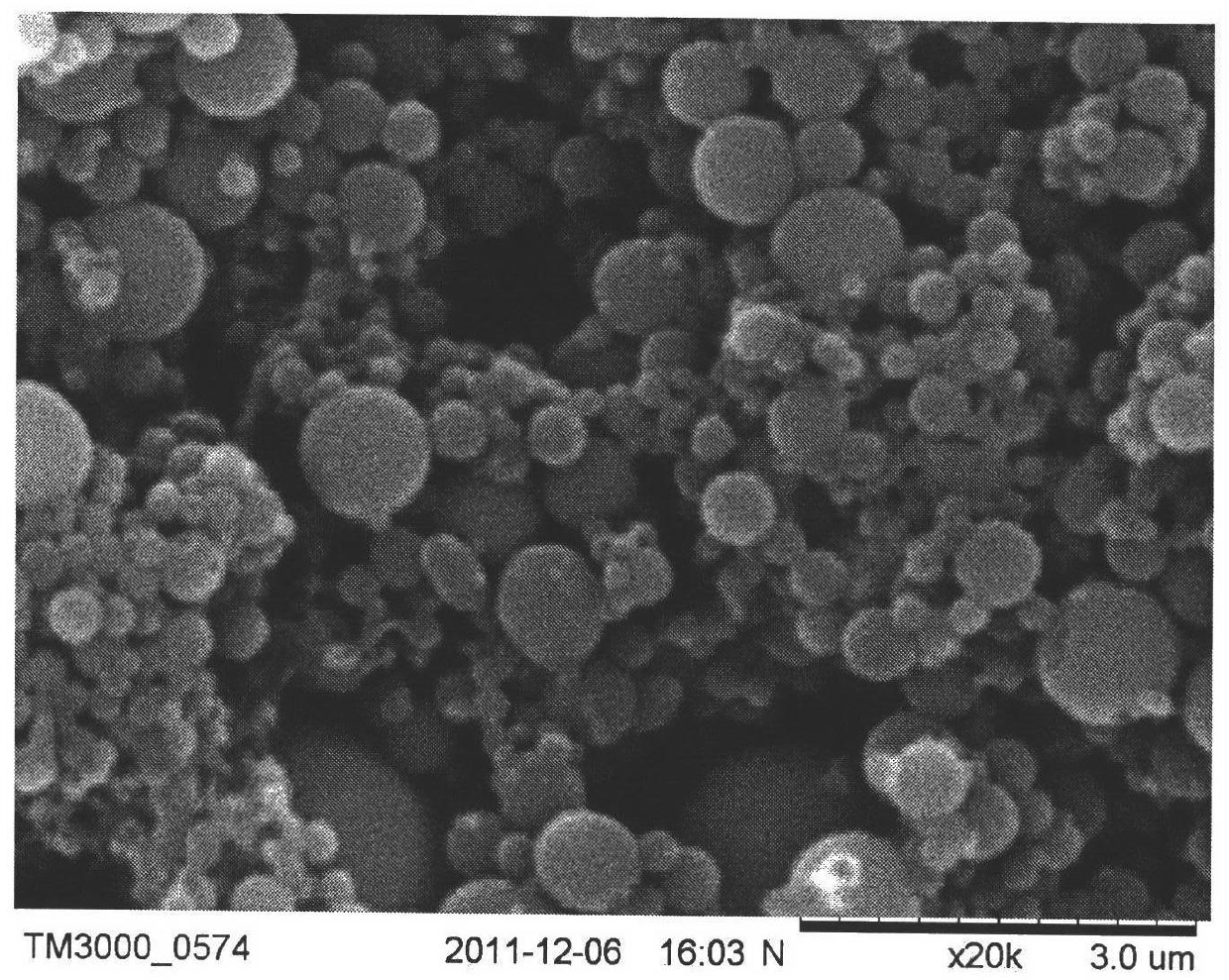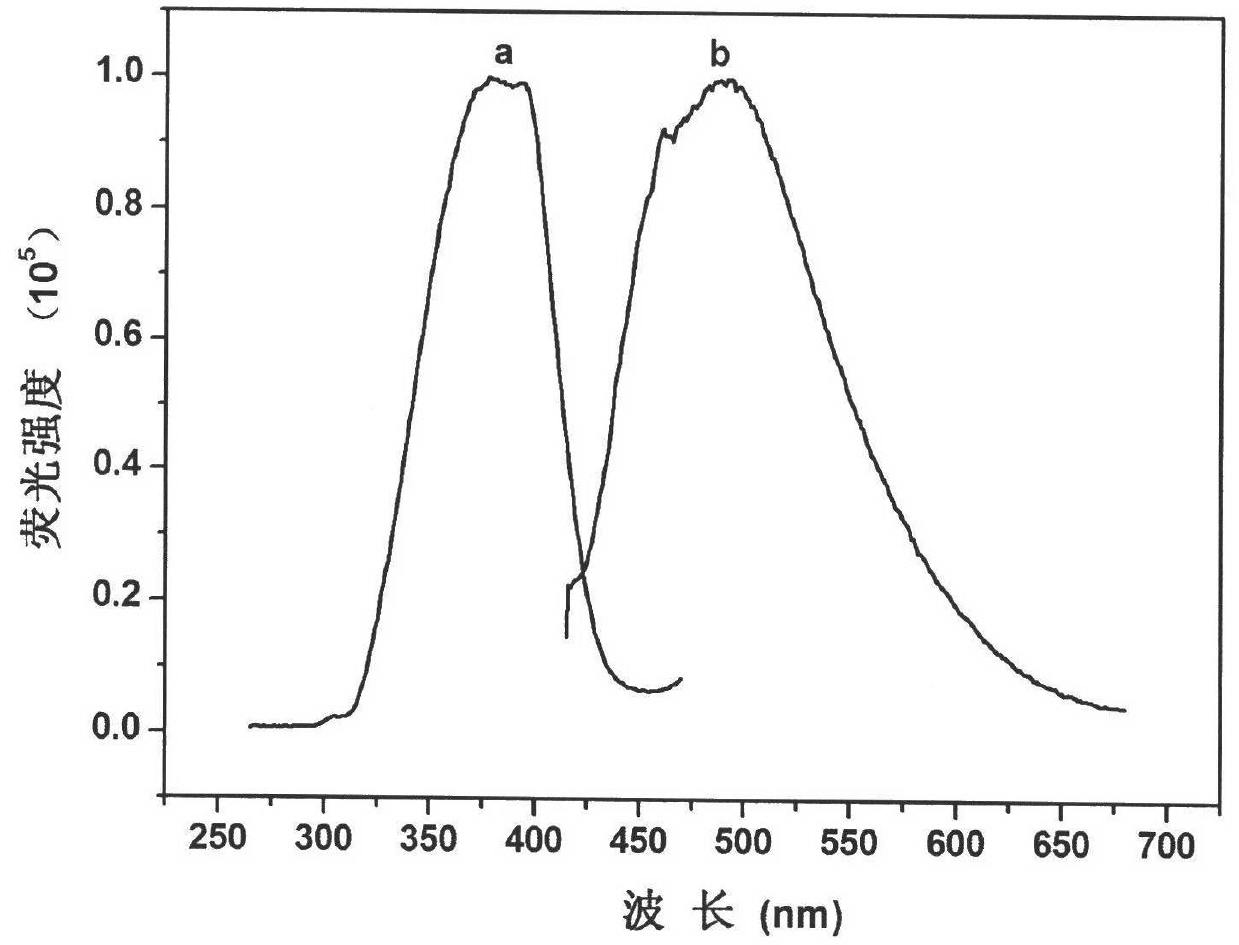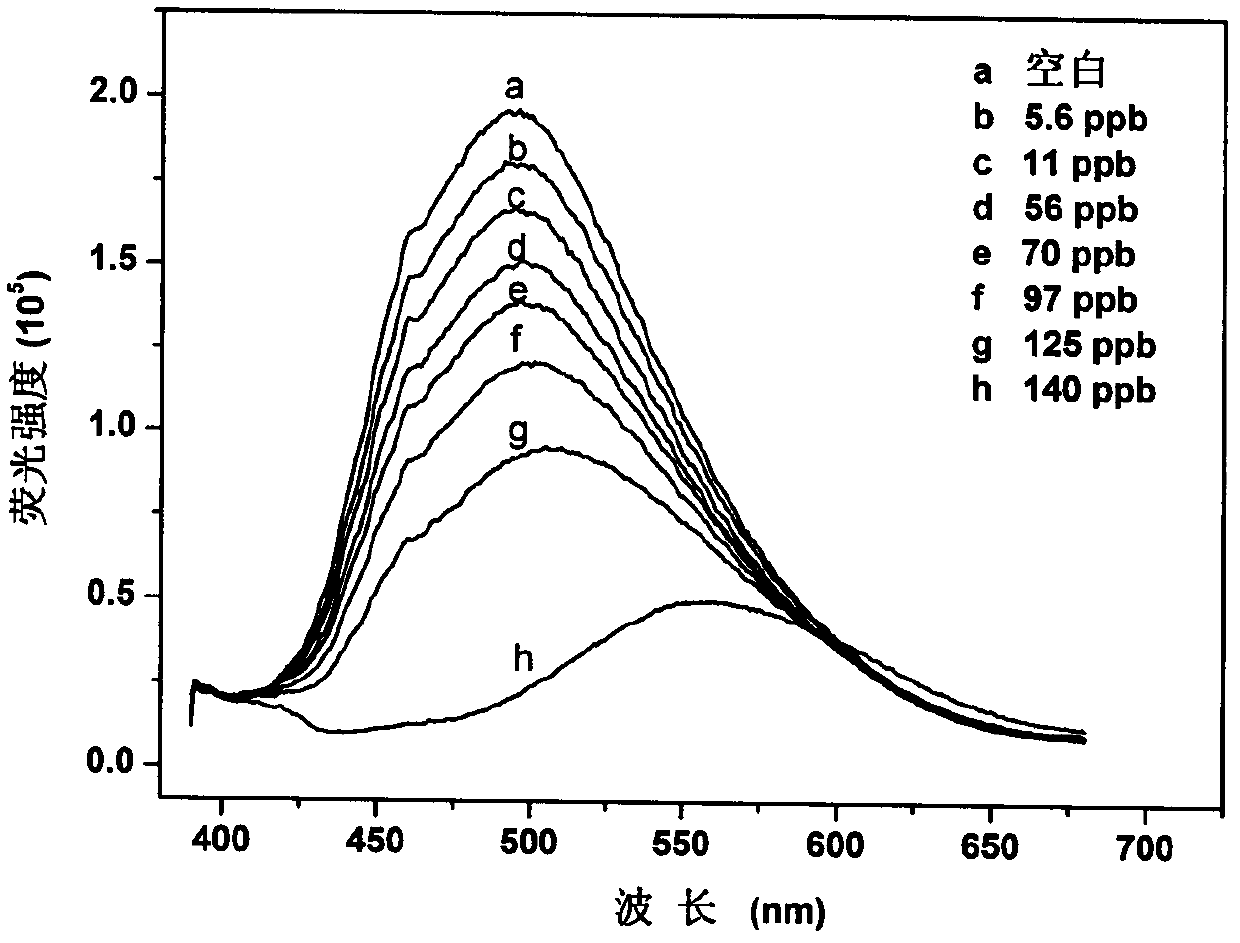Preparation method of polymer fluorescence sensing film containing cholesterol
A fluorescence sensing, cholesterol technology, applied in fluorescence/phosphorescence, chemical instruments and methods, luminescent materials, etc., can solve the problems of being susceptible to interference from other substances, harsh sampling conditions, and low signal-to-noise ratio, etc. Long, easy-to-operate, high-sensitivity results
- Summary
- Abstract
- Description
- Claims
- Application Information
AI Technical Summary
Problems solved by technology
Method used
Image
Examples
Embodiment 1
[0036] 1. Preparation of cholesterol-containing polymers
[0037] (1) Synthesis of 2,5-diiodo-1,4-bis(methoxy)-benzene
[0038]Under the condition of argon gas with a flow rate of 0.6-0.8mL / s, add 2g of p-xylylene dimethyl ether, 1.2g of potassium iodate, and 4g of iodine into the mixed solution of 150mL of anhydrous acetic acid and 15mL of 10% sulfuric acid aqueous solution , the molar ratio of p-xylylene dimethyl ether to potassium iodate, iodine, anhydrous acetic acid and sulfuric acid is 1:0.4:1:170:2, reflux reaction at 70°C for 12 hours, filter, and dry at 25°C for 12 hours to prepare 2 , 5-diiodo-1,4-two (methoxy)-benzene, its reaction equation is as follows:
[0039]
[0040] (2) Synthesis of 2,5-diiodo-1,4-bis(hydroxyl)-benzene
[0041] Dissolve 3g of 2,5-diiodo-1,4-di(methoxy)-benzene in 30mL of dichloromethane, add 19mL of boron tribromide dropwise at -80°C, 2,5-diiodo- The molar ratio of 1,4-bis(methoxy)-benzene to boron tribromide and dichloromethane was 1:3...
Embodiment 2
[0062] In the synthesis of 2,5-diiodo-1,4-bis(methoxy)-benzene step (1) in the preparation of cholesterol-containing polymer step 1 in Example 1, at a flow rate of 0.6 to 0.8 mL / s Under argon atmosphere, add 2 g of p-xylylene dimethyl ether, 0.6 g of potassium iodate, and 3.2 g of iodine into a mixed solution of 130 mL of anhydrous acetic acid and 8 mL of 10% sulfuric acid aqueous solution. The molar ratio of potassium, iodine, anhydrous acetic acid and sulfuric acid is 1:0.2:0.8:150:1, reflux at 70°C for 14 hours, filter and dry to prepare 2,5-diiodo-1,4-bis(methyl Oxy)-Benzene. In the synthesis of 2,5-diiodo-1,4-bis(hydroxy)-benzene step (2), 3 g of 2,5-diiodo-1,4-bis(methoxy)-benzene was dissolved in 20 mL di In methyl chloride, add 12.6 mL of boron tribromide dropwise at -80°C, the molar ratio of 2,5-diiodo-1,4-bis(methoxy)-benzene to boron tribromide and dichloromethane 1:2:40, stirred for 14 hours, filtered and dried to prepare 2,5-diiodo-1,4-bis(hydroxyl)-benzene. In...
Embodiment 3
[0064]In the synthesis of 2,5-diiodo-1,4-bis(methoxy)-benzene step (1) in the preparation of cholesterol-containing polymer step 1 in Example 1, at a flow rate of 0.6 to 0.8 mL / s Under argon atmosphere, add 2 g of p-xylylene dimethyl ether, 1.8 g of potassium iodate, and 4.8 g of iodine into a mixed solution of 170 mL of anhydrous acetic acid and 22.5 mL of 10% sulfuric acid aqueous solution with a mass fraction of p-xylylene dimethyl ether and iodine. Potassium chloride, iodine, anhydrous acetic acid, and sulfuric acid in a molar ratio of 1:0.6:1.2:190:3 were refluxed at 70°C for 8 hours, filtered, and dried to prepare 2,5-diiodo-1,4-bis( Methoxy)-Benzene. In the synthesis of 2,5-diiodo-1,4-bis(hydroxy)-benzene step (2), 3 g of 2,5-diiodo-1,4-bis(methoxy)-benzene was dissolved in 40 mL di In methyl chloride, add 25.3 mL of boron tribromide dropwise at -80°C, the molar ratio of 2,5-diiodo-1,4-bis(methoxy)-benzene to boron tribromide and dichloromethane 1:4:80, stirred for 10...
PUM
 Login to View More
Login to View More Abstract
Description
Claims
Application Information
 Login to View More
Login to View More - R&D
- Intellectual Property
- Life Sciences
- Materials
- Tech Scout
- Unparalleled Data Quality
- Higher Quality Content
- 60% Fewer Hallucinations
Browse by: Latest US Patents, China's latest patents, Technical Efficacy Thesaurus, Application Domain, Technology Topic, Popular Technical Reports.
© 2025 PatSnap. All rights reserved.Legal|Privacy policy|Modern Slavery Act Transparency Statement|Sitemap|About US| Contact US: help@patsnap.com



